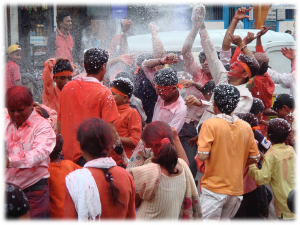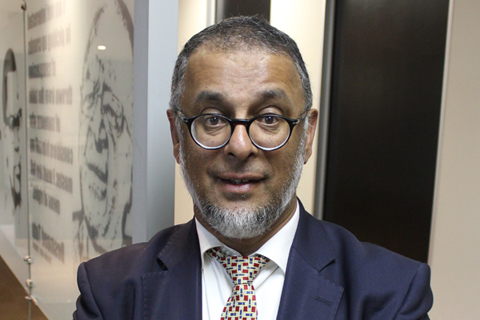By Ellie Koewler ’15
Dr. Matthew Rosen’s Visual Anthropology course re-imagines traditional ethnography through the world of modern media. Rosen is a cultural anthropologist focusing on visual anthropology and media studies with field research experience in India.
While most academic anthropologists publish their research and field experiences in scholarly journals or written ethnographies, this course allows students to conceptualize new mediums of communication to make anthropology research more accessible and engaging to broader audiences. These mediums can be photo essays, video productions, blog posts, and other visual aids.
The course (ANTH 3010) is taught in three pieces. First, students look at how visual anthropology conveys images of culture in everyday life in settings far and near—from Indonesian shopping malls and West African diamond mines, to American magazines and the unbound worlds of social media. The second part of the course critically examines the use of visual media to present ethnographic research through readings that ultimately build to the third course component: methodology. Mindful methodology defines how to use images as a tool of social research ethically and thoughtfully.
“Visual anthropology is a good way of getting students to shake up things they take for granted such as their constant interaction with screens,” explains Rosen. “As we spend more time with these mediums, real relations develop and reveal how culture can open up” to viewers.
Students are currently beginning work on their final project, a 10-15 piece photo essay or short video accompanied by 1500 words. This project allows students to choose any sociological topic and explore it through a visual means.
“I think visual anthropology is becoming popular because it provides students a new format to produce their work,” explains Junior Anthropology major Erin Noonan ’16. “Watching films in class has really challenged the way I think about presentation of ideas in anthropology. Many of the films don’t outwardly give you a clear cut storyline. When we share our interpretations in class, there are varying opinions of the same scene. It forces you to question what the filmmaker was trying to get across.”
This is the first time Visual Anthropology has been offered, but Rosen looks forward to developing the course further in future semesters.
For more information, contact Dr. Rosen at rosenm@ohio.edu.




















Comments